Thanks everyone who’s helped and been supportive in 2015. It’s been a busy year and I barely stopped to think about a lot of very important things, but spent too long thinking about other things which in retrospect probably aren’t so important. I’m sure that’s normal.
First: what’s coming up in 2016?
- On 20 January, I’m talking at Behavior Design Amsterdam – thanks Wilbert Baan and Iskander Smit for the invitation
- In February, I’m off to Mexico City as the RCA lead, working with Laura Ferrarello, for a collaborative Mexico—UK project with Laboratorio para la Ciudad, Superflux, Future Cities Catapult and UNAM. Supported by the British Council’s Newton Fund, we’ll be looking at aspects of how to make policy visible, tangible and interactable-with (agency?), in the city environment, transposing ideas between Mexico City and London and vice versa. Thank you to Dan Hill, Claire Mookerjee, Gabriella Gómez-Mont, and everyone else involved in setting this up.
- From 27—30 June, DRS2016 in Brighton, the Design Research Society conference, is shaping up into an interesting and diverse programme of perspectives on design, research and society. I’m conference experience chair, along with Veronica Ranner, and we’ll be trying to help curate a good experience for everyone taking part. Some thoughts here on how you can help.
- The biggest event in 2016, scheduled for the autumn, will be O’Reilly’s publication of my Design with Intent book – see below for some more details.
- Living Labs, a book arising from the SusLabNWE project, for which I am an editor along with David Keyson and Olivia Guerra Santin from TU Delft, will be published by Springer
- ‘Taking the Code for a Walk’, written by Delfina Fantini van Ditmar and myself for Elisa Giaccardi’s ‘Connected Everyday’ forum in ACM Interactions will be published. This is a brief but exciting article detailing some of the research Delfina has done for her PhD around human interaction with the algorithmic systems of the ‘smart’ home, taking a second-order cybernetic perspective.
- ‘Plans and Speculated Actions’, a chapter that Veronica Ranner and I have written for Jonathan Chapman’s Routledge Handbook of Sustainable Product Design, should be published (though I see as I write this that the intended publication date is actually 2017). We’re exploring what happens when design for behaviour change and speculative design collide, with a sustainability focus.
- At the RCA, Research Culture Action will continue in 2016, a series of informal lunchtime talks bringing together research students and staff from across the College. Our first ‘prototype’ event, in October, featured Daisy Ginsberg, Grit Hartung and Sarah Teasley, and I’m hoping we can have them every couple of months.
In career, personal development, and work-life balance terms, 2016 needs to be very different to 2015. I won’t go into it here, but I have come to the conclusion that I need to heed Mary Dankoski‘s advice outlined here by Kate Clancy:
Dr. Dankoski asked us if we were the type of academic who lived by Plan A: did what we were asked to do and hoped we would have a rewarding fulfilling career while also meeting the promotion and tenure expectations, or Plan B: were proactive, developed a plan and negotiated responsibilities to be sure we will have vitality, find real meaning in our work, and meet promotion expectations.
You can probably guess which type most of us were, and which type Dankoski encouraged us to become. The Plan A academic says yes to most things because she is directionless and is trying to meet expectations, whereas the Plan B academic uses her personal values and interests to define and express her scholarly worth.
I have been trying to follow Plan A for the past few years, because I thought it would lead somewhere, but my resolution for 2016 is Plan B, or something better. And the main part of that is making things. I used to do it, and have done it a bit with things like Powerchord in recent years, but nowhere near to the extent I would like to. Writing papers, and book chapters, and reports that no-one will read, has squeezed out something that I really enjoyed. I need to get back to it, and find a way to make an academic career work that isn’t primarily about being seen to produce outputs, but actually to do things (and have the freedom to think about them too).
2015 certainly involved doing a lot, even if I didn’t make much. It’s strange how in an everyday life so flooded by information and essential updates from everything from household objects to people whom I vaguely remember who added me on LinkedIn, I still forget a lot of what I was doing only a few months ago. Updating my CV recently, I suddenly remembered an entire industry collaboration project I did in summer 2013, with meetings, and diagrams, and presentations and everything, that had completely slipped my mind. So, because I know that I’ll forget them if I don’t record them, below, here’s some of what happened in 2015:

10 years of this blog
The anniversary slipped by unrecorded here, but it was back in November 2005 that I first started this blog, then called Architectures of Control in Design. It changed my life: it led to changing career, doing a PhD, meeting people from all over the world. Still on the same WordPress installation, with layers of tinkering and lots of things that no longer work, the blog probably deserves a bit of attention for its 11th year.

Design with Intent book
In August I signed a contract with O’Reilly to publish a Design with Intent book, which aims to give practitioners a more nuanced approach to design and behaviour, working with people, people’s understanding, and the complexities of everyday human experience. It will build on the toolkit, and my PhD, but also what I’ve learned over the last few years on practical research projects, with people in real contexts, around people’s understanding of, and interaction with, technology and designed systems.
It’s taking longer to write than I had hoped, not due to the content as much as the difficulty of arranging uninterrupted periods of time to concentrate on writing it. That’s certainly not a problem unique to me, but it gives me new (extra) respect for people who manage to write these kinds of books alongside busy jobs, looking after children, and everything else. Publication date should be Autumn 2016: see the website for updates.
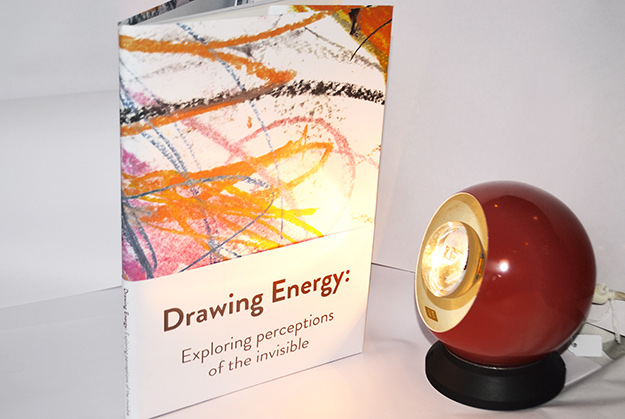
Drawing Energy book published
Drawing Energy was published in July by the RCA. Written by Flora Bowden, together with myself, Rama Gheerawo and Clare Brass, and designed by Hannah Montague, the book explores public perceptions of energy, through a drawing project Flora and I ran, in which more than 180 people illustrated their thoughts and reactions to the question ‘What does energy look like?’, as part of the Interreg IVB-funded SusLabNWE project.
You can view the drawings online, download a PDF or order a free copy of the book.
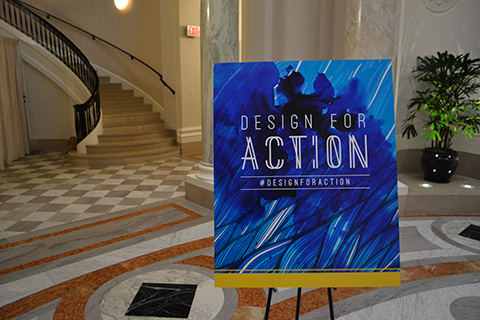
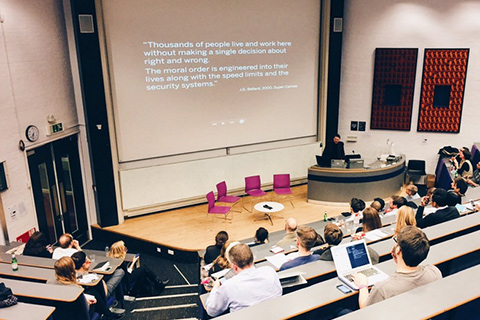
Talks
I’ve done a few talks this year, around design, behaviour, understanding and related subjects, most notably Design for Action 2015 in Washington, DC, the Hans Sauer Foundation’s Social Design Elevation Days in Munich, Product Tank in London, This Happened at Goldsmiths (on “The Power to Act: Exploring agency, design and participation in cities”), Green Sky Thinking week (as part of Max Fordham’s programme), the launch of Keep Britain Tidy’s Centre for Social Innovation. Thanks to Steve Wendel, Zarak Khan, Nynke Tromp, Ralph Boch, Barbara Lersch, Alison Austin, Gyorgyi Galik, Kate Pincott, Henry Pelly, Tim Burns and everyone else involved in these events, for the invitations.
Here’s a video of my talk at Mind The Product’s Product Tank in March.
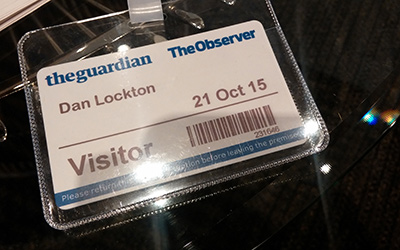
Guardian Tech Weekly Podcast
In October I was a guest on the Guardian Tech Weekly podcast, hosted by Nathalie Nahaï, talking about dark patterns, along with Cennydd Bowles, and Geoff White from Channel 4 News. Listen to it here (I’m on at about 13 minutes in, and say “kind of” about 20 times during my few minutes of airtime).


Left: Relational Materials workshop, Delfina Fantini van Ditmar; Right: Cultural probes around repair, Nazlı Gökçe Terzioğlu
PhD supervision
This year I have been a visiting (i.e. entirely uncontracted adjunct) research tutor for Innovation Design Engineering at the RCA, working mainly with a wonderful group of research students, including five whom I’m supervising:
- Delfina Fantini van Ditmar (2012—2016), ‘The Internet of Dwelling’ (second-order cybernetics and human interaction with IoT and ‘smart’ homes–image above). Supervised with Professor Ashley Hall, RCA Innovation Design Engineering and Dr Paul Pangaro, College for Creative Studies, Detroit
- Dr Dave Pao (MBBS, MRCP, MD) (2013—present), ‘Design as the 3rd voice in the clinician-patient conversation’ (new interfaces for facilitating conversations in sexual health contexts). Supervised with Dr John Stevens, RCA Global Innovation Design
- Nazlı Gökçe TerzioÄŸlu (2013—present), ‘Exploring the Means of Creating New Relationships between Users and Products Through Repair’–image above. Supervised with Clare Brass, SustainRCA
- Hugo Glover (2013—present), ‘Stereoscopic Spatiality: A Practice-based Investigation into the Use of Stereoscopic 3Dâ€Depth Technologies in Physical and Digital Space’. Supervised with Neil Barron, RCA Innovation Design Engineering
- Chang Hee Lee (2014—present), ‘Synaesthesia Materialisation: Synaesthetic Inputs within the Product Design Industry’. Supervised with Dr John Stevens, RCA Global Innovation Design
Thanks to all the IDE research students for all your enthusiasm and help this year, and well done on everything you’ve achieved. In November, Nazlı Gökçe TerzioÄŸlu and Yoon Choi both presented papers at Sustainable Innovation 2015 on which I was a co-author, covering two intriguing directions in understanding (and changing) people’s relationships with products from a sustainability perspective:
–TerzioÄŸlu, N., Brass, C. & Lockton, D. (2015) ‘Understanding user motivations and drawbacks related to product repair’. Sustainable Innovation 2015, 9-10 November 2015, Epsom, UK. (PDF)
–Choi, Y., Lockton, D., Brass, C., & Stevens, J. (2015) ‘Opportunities for sustainable packaging design: Learning from pregnancy as a metaphor’. Sustainable Innovation 2015, 9-10 November 2015, Epsom, UK. (PDF on ResearchGate)
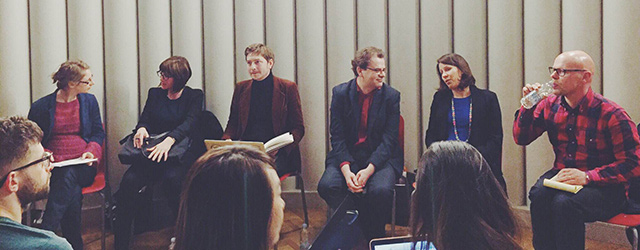
V&A Design Culture Salon
As my look of terror / staring into nothingness in the above photo (by Jonny Jiang) might suggest, I chaired a Design Culture Salon at the V&A in November, with the title “Is Designing for Behaviour Change ‘Creepy’?” With a fantastic panel of Alison Powell, Phoebe Moore, Jessica Pykett, Peter John and Simon Blyth, we debated issues from the Quantified Self to the Nudge Unit to algorithmic governance: all with a “design and behaviour” theme, too broad really for a single event, but very enjoyable. Thanks to Guy Julier and Leah Armstrong for organising the event, to the panellists, and to so many people who came to see and take part.
Here’s a transcript of my introduction (I’m partly putting it here for future reference), while there are some reflections here from Lucy Kimbell, Jocelyn Bailey and Stephen Feber, collated by Guy Julier, and Phoebe Moore has written up her introductory talk, covering specifically design for behaviour change in the workplace.
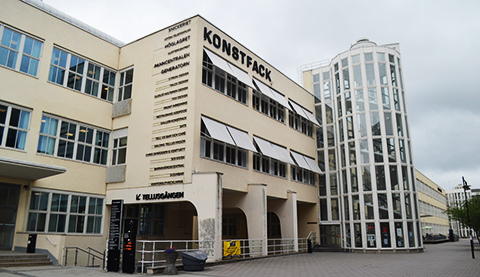
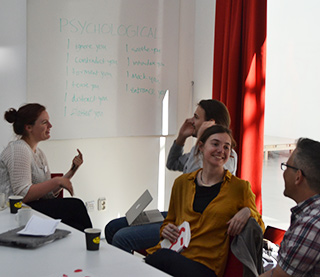
The Performance of Nonhuman Behaviour
In June, I ran a workshop at Nordes 2015, at Konstfack, in Stockholm, with Delfina Fantini van Ditmar and Claudia Dutson, looking at conversations between people and machines. We packed a lot into the day, with some great participants, but my part of the workshop was mostly focused on “thinking about how machines think we think”–applying some basic forms from R.D. Laing’s Knots to situations that might arise in the smart home (or other algorithmic developments). We got some nice examples of knot-like scenarios, particularly around people trying to cajole the technology to make different assumptions. I can see why, as Paul Pangaro commented, Gordon Pask liked Knots so much. I am, slowly, working on a paper drawing on some of the ideas generated in the workshop: thank you to all the participants and to Salu Ylirisku for the organisation.
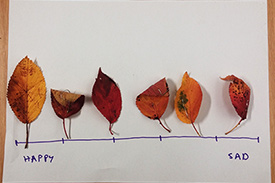

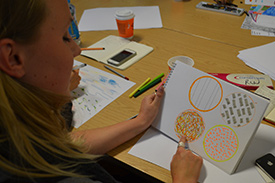
One Another: Empathy and Experience
In October, Dr Katie Gaudion and I ran One Another: Empathy and Experience, a week-long ‘AcrossRCA’ course exploring questions of how we can experience the world as someone (or something) else does. With participants from eight different RCA MA and PhD programmes, over the week, we had a talk from Jon Adams, an autistic artist with synaesthesia, we visited London Zoo to explore the world from animals’ points of view (and human interactions), and through practical experiments, tried to see if we could “generate” empathy for inanimate objects, such as paper tissues, leaves and headphones. We backed up the practical work with some theoretical psychology background around theory of mind, empathy and the fundamental attribution error. The week ended with three really brilliant group projects, which invited participants to try to experience the world through the perspective of another:
– The Human Zoo, by Sarha Hersi, Joey (Jupone) Wang, Saaya Kamita, Mariana Pedrosa
– Obsessions, by Thomas Leech, Faith Wray, Andrea Fischer, Heeju Kim and Chang Hee Lee
– Empathising with Claustrophobia (centre, above), by Anna Dakin, Harry Thompson, Nong Chotipatoomwan and Tess Dumon
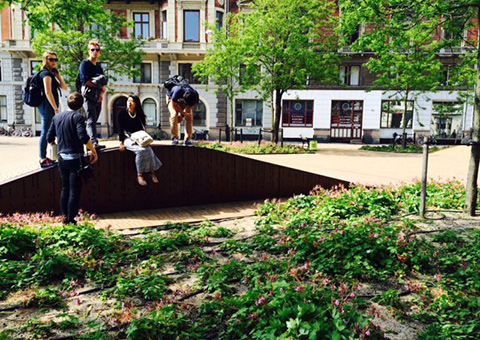
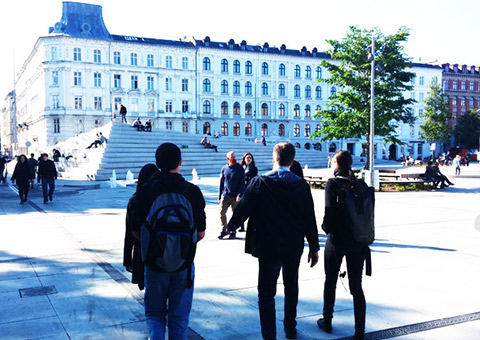
Rice University Urban Sustainability and Livability Summer Institute
The end of May and early June saw Flora Bowden, Claudia Dutson, Delfina Fantini van Ditmar and myself run Learning New Ways of Looking at the City, an international summer programme for Rice University’s Urban Sustainability and Livability Summer Institute, at the Danish Institute for Study Abroad, in Copenhagen. With visits over three weeks, working with an impressively enthusiastic and motivated group of Rice students, we used Copenhagen as a setting to explore questions around transport and mobility, tourism, green space, and cultural differences, among other issues, through student research projects. Thanks to Don Ostdiek, Michael Emerson and Julia Grasse for the organisation, and thanks to Anne-Kathrine Kjær Christensen and Larry Toups for visiting contributions.
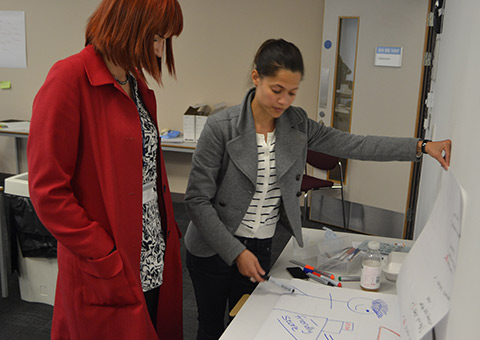
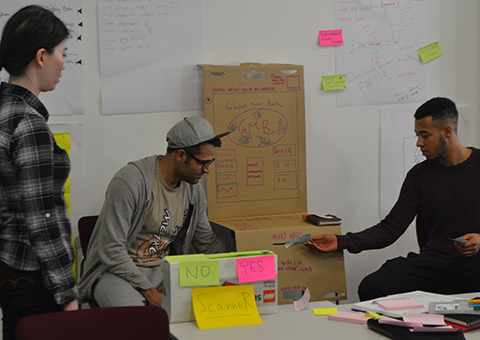
Kingston University MACE Startup Weekend
At the end of September, I returned to Kingston Business School’s MA Creative Industries and the Creative Economy, to run the Startup Weekend, a two-day workshop right at the start of the course, in which new students on this unique programme, combining design and business (with the practical requirement of creating a business by the end of the course), get a rapid introduction to design research and prototyping and carry out a group project responding to a real-life problem they have identified. In 2014, we looked at the experience of new international students; in 2015 we focused on money, with field research in Kingston town centre, including visiting (and comparing the customer experience at) Metro Bank and some more traditional establishments, and a guest talk from Stephen Wendel via Skype. Groups came up with some clever concepts, including a service that automatically puts change onto a card, new kinds of international money transfer service, and redesigning how Argos works. Thanks to Janja Song, and Mark Passera who originally invited me.
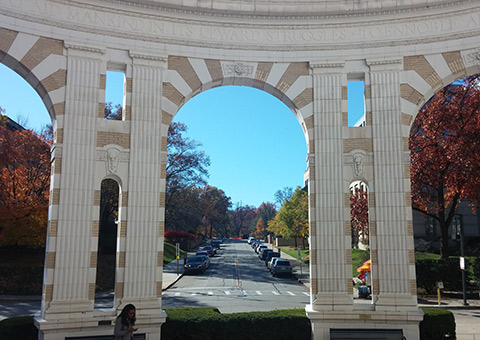
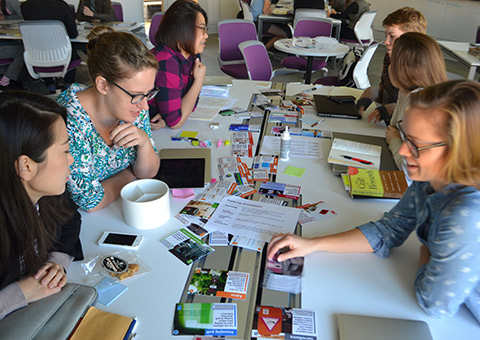
Visit to Carnegie Mellon
In November, I visited Carnegie Mellon University in Pittsburgh, to do a talk / mini-workshop called Design, Behaviour & Understanding, in the School of Design, for Master’s students in Molly Steenson’s Interaction and Service Design class, and a talk called People Don’t Really Use Energy for the Intelligent Workplace team in the School of Architecture. I also got to meet some very interesting people (students and staff), and take part in one of the Design PhD group discussions, which was very enjoyable. Thank you to Cameron Tonkinwise, Kakee Scott, Darlene Scalese, Jane Ditmore, Molly Steenson, Simon King, Terry Irwin, Peter Scupelli, Bruce Hanington, Michael Arnold Mages, Dimeji Onafuwa, and everyone else who arranged my visit and made me feel so welcome.
Good luck everyone for 2016: it’s going to be what we make it!

1 Comment so far